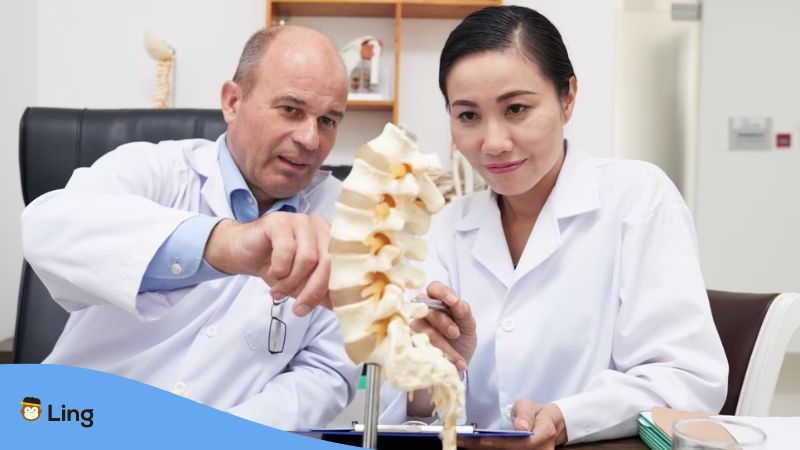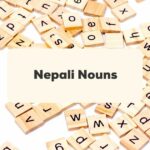Ever wanted to give your Korean language skills an interesting twist? Let’s talk about human bones—in Korean!
Not your typical language lesson, like learning the most common Korean words, right? It’s more than just vocabulary. It’s about learning the Korean language while connecting it to biology and culture.
Today, we’re decoding the names of the bones of the human body in Korean, from head to toe. No jargon, no complications—just an engaging, informative ride. Let’s get to it.
Getting To Know The Human Skeletal System
A remarkable feat of nature, that’s our human skeletal system! Made up of about 206 bones when fully grown, this internal scaffold does a lot more than just hold us upright.
It’s all about movement, protection, and support. Whether you’re a doctor, a biology fan, or simply a curious soul, knowing the skeletal system brings us closer to understanding the marvel that is the human body.
The Korean Bone Terminology
So, let’s get to the crux of our topic today – Korean bone terminology. This isn’t just about learning new words.
It’s like peeling back layers of a Jogakbo (조각보, traditional patchwork), each piece revealing more about our bodies.
Starting from the top, let’s take it step by step.

From The Top: The Upper Body Bones
Right from the crown of our heads to the torso that houses our vital organs, each bone plays a unique role in the Korean body parts.
Let’s understand the structure of our upper body parts, one bone at a time:
- Skull (두개골, dugaegol): Our skull isn’t too different from a sturdy Hanbok hat, protecting our brain against injuries. Those several plates that lock together? They form the perfect armor for our most crucial organ.
- Jaw (턱뼈, teokppyeo): This is the unsung hero during a Samgyeopsal party. It lends structure to our mouth and supports our lower teeth. Without it, imagine the difficulty in speaking or savoring our favorite meals.
- Neck Vertebrae (목 척추, mok chekchu): The neck vertebrae have the important job of supporting our heads. They ensure smooth movement, making those affirming nods and shaking gestures possible.
- Collarbone (쇄골, swaegol): This forms the perfect bridge connecting our upper body and arms. Like the clean lines of the Hangul script, it elegantly supports and aids in arm movement.
- Shoulder Blade (견갑골, gyeongapgol): Our shoulder blade brings together the collarbone and upper arm to form the shoulder joint, which is essential for all those Korean hand gestures we make.
- Arm and Hand Bones (상완골, 전완골, 손뼈): These are our prime tools, much like Jeotgarak (젓가락, chopsticks) in a Korean meal, used for everything from eating to cooking.
At The Heart Of It All: Rib Cage And Spine
Center stage, we have the rib cage and spine. These components play a pivotal role in our body’s framework.
- Rib (갈비뼈, galbipyeo): Just like the mouthwatering Korean dish Galbi, our ribs are integral to our body. They establish a protective enclosure around our heart and lungs, absorbing shocks and preventing damage.
- Sternum (가슴골, gaseumgol): It is one of the bones of the human body in Korean that we feel at the center of our chest, like the clasp of a traditional Korean Norigae. It securely connects our ribs, safeguarding our vital organs.
- Spine (척추, chekchu): This forms the backbone of our existence, quite literally. Its vertebrae provide support and flexibility, making those impromptu dance sessions to K-pop hits possible!
Down To Earth: The Lower Body Bones
Moving downwards, let’s discuss the lower body bones, beginning from our hip and all the way to the tip of our toes.
- Hip Bone (골반, golban): The hip bone forms the stable base, kind of like the sturdy clay bottom of a Korean Onggi pot. It connects the lower human body parts to the upper body, allowing us to carry out movements easily.
- Leg and Foot Bones (대퇴골, 무릎뼈, 정강뼈, 발뼈): Taking us from strolls in the park to high-energy Taekwondo sessions, our leg and foot bones give us mobility. We couldn’t possibly enjoy a spirited Gangnam-style dance-off without them, right?

Related Bone Terminology In Korean
While we’ve covered the bones of the body, a few terms might be helpful when discussing bones in Korean.
- Bone Marrow (골수, golsu): Have you ever enjoyed a hearty Korean Seolleongtang soup? The rich, milky broth comes from boiling ox bones, extracting the nutritious 골수, or bone marrow. In our body, this spongy tissue inside our bones is just as vital, producing blood cells.
- Bone Fracture (골절, goljeol): This term might bring back memories of an unfortunate fall or injury. This is an instance where the integrity of the bone is compromised. Safety first, everyone!
- Osteoporosis (골다공증, goldagongjeung): This is a condition that weakens bones, making them fragile and more likely to break. It’s like a traditional Korean Jangdokdae pottery getting tiny cracks over time. A reminder for us to take care of our bone health.
- Cartilage (연골, yeongol): Think of this like the soft filling of a Gyeongdan rice cake. It cushions our joints and helps them glide smoothly during movements.
- Joint (관절, gwanjeol): This is like the hinges on a traditional Hanok door, connecting two or more bones and allowing them to move in coordination.
- Ligament (인대, indae): These are like the resilient silk threads used in traditional Korean Nubi quilting, binding bones together and providing stability to our joints.
- Tendon (건, geon): The Korean word “건,” or tendons, behave like strings on a Gayageum, a traditional Korean zither. They connect our muscles to bones, playing a crucial role in our movements and flexibility.
- Arthritis (관절염, gwanjeol-yeom): This refers to inflammation of the joints. It’s like an unwanted disturbance during a peaceful afternoon of making Kimchi, causing discomfort and stiffness.
Learn The Korean Language And 60+ More With Ling!
Now you know the bones of the human body in Korean. But why stop there? With the Ling app, your language journey spans across continents.
Did you know you can also delve into Cantonese’s tonal beauty or experience Tagalog’s melodious charm?
Indeed, the Ling app offers an expansive library of over 60 languages ready for you to discover.
Who said gym workouts were the only way to strengthen yourself? Let’s give our language muscles some exercise too!
Your next language is just a tap away!
Download Ling from the Google Play and App Store, and let’s turn language learning into a joyous habit!



































































